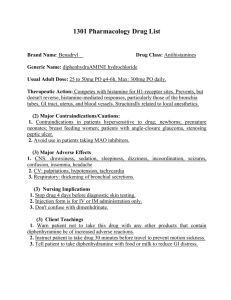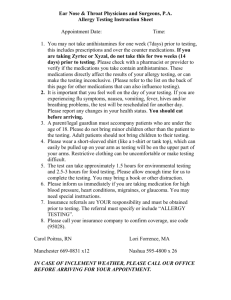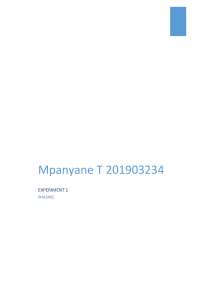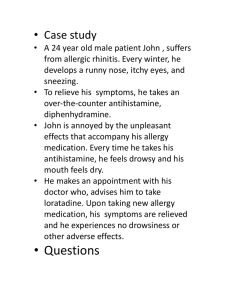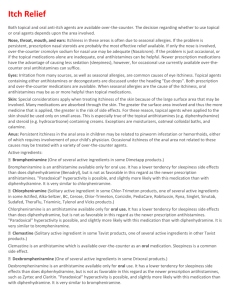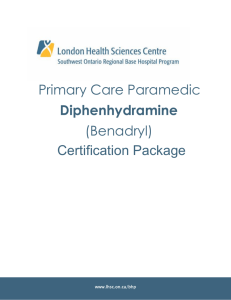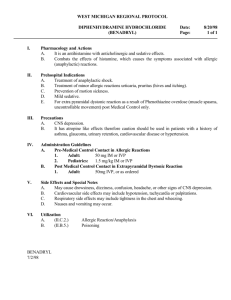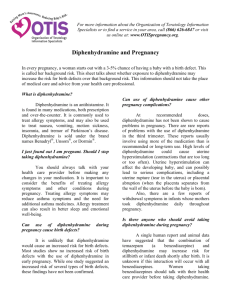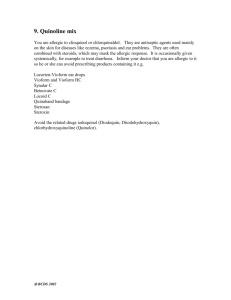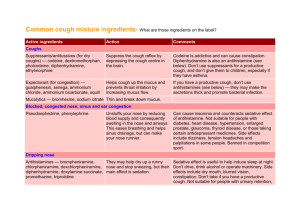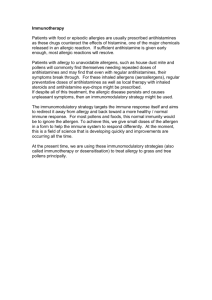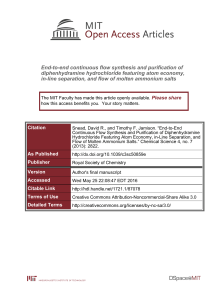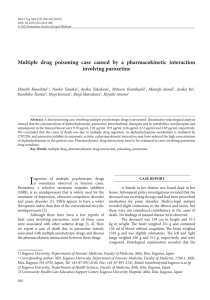Medication Reference - Health Sciences North
advertisement
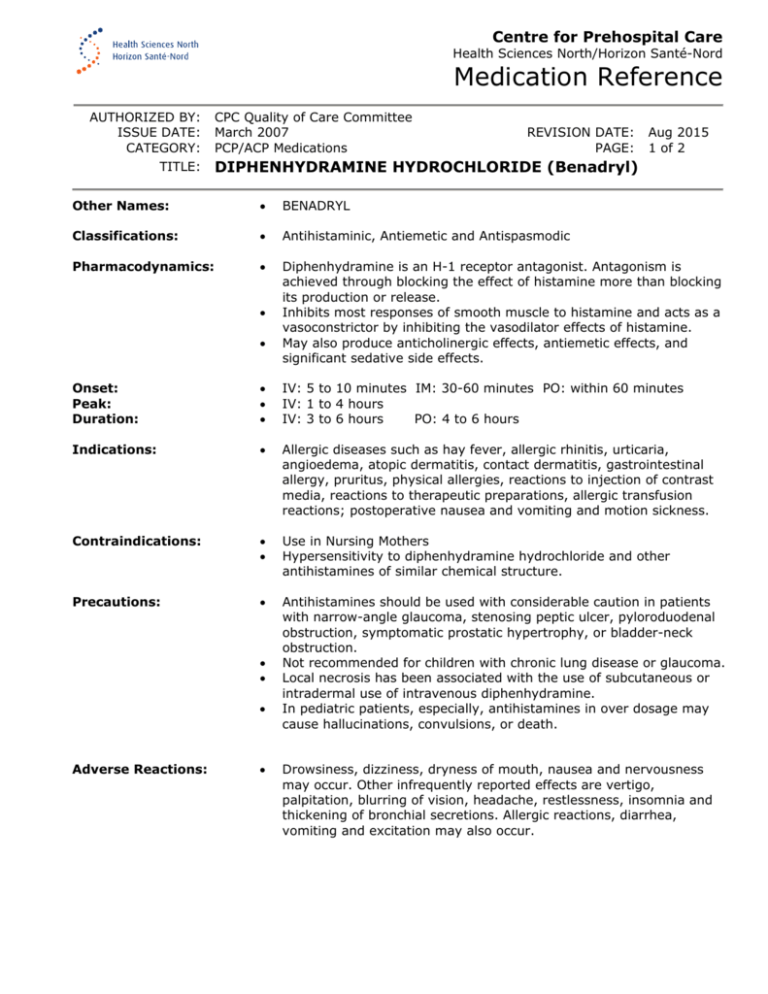
Centre for Prehospital Care Health Sciences North/Horizon Santé-Nord Medication Reference AUTHORIZED BY: ISSUE DATE: CATEGORY: TITLE: CPC Quality of Care Committee March 2007 PCP/ACP Medications REVISION DATE: PAGE: Aug 2015 1 of 2 DIPHENHYDRAMINE HYDROCHLORIDE (Benadryl) Other Names: BENADRYL Classifications: Antihistaminic, Antiemetic and Antispasmodic Pharmacodynamics: Diphenhydramine is an H-1 receptor antagonist. Antagonism is achieved through blocking the effect of histamine more than blocking its production or release. Inhibits most responses of smooth muscle to histamine and acts as a vasoconstrictor by inhibiting the vasodilator effects of histamine. May also produce anticholinergic effects, antiemetic effects, and significant sedative side effects. Onset: Peak: Duration: IV: 5 to 10 minutes IM: 30-60 minutes PO: within 60 minutes IV: 1 to 4 hours IV: 3 to 6 hours PO: 4 to 6 hours Indications: Allergic diseases such as hay fever, allergic rhinitis, urticaria, angioedema, atopic dermatitis, contact dermatitis, gastrointestinal allergy, pruritus, physical allergies, reactions to injection of contrast media, reactions to therapeutic preparations, allergic transfusion reactions; postoperative nausea and vomiting and motion sickness. Contraindications: Use in Nursing Mothers Hypersensitivity to diphenhydramine hydrochloride and other antihistamines of similar chemical structure. Precautions: Antihistamines should be used with considerable caution in patients with narrow-angle glaucoma, stenosing peptic ulcer, pyloroduodenal obstruction, symptomatic prostatic hypertrophy, or bladder-neck obstruction. Not recommended for children with chronic lung disease or glaucoma. Local necrosis has been associated with the use of subcutaneous or intradermal use of intravenous diphenhydramine. In pediatric patients, especially, antihistamines in over dosage may cause hallucinations, convulsions, or death. Adverse Reactions: Drowsiness, dizziness, dryness of mouth, nausea and nervousness may occur. Other infrequently reported effects are vertigo, palpitation, blurring of vision, headache, restlessness, insomnia and thickening of bronchial secretions. Allergic reactions, diarrhea, vomiting and excitation may also occur. CATEGORY: SUBJECT: PCP/ACP Medications 2 of 2 DIPHENHYDRAMINE HYDROCHLORIDE Drug Interactions: Dosages PAGE: Effects of diphenhydramine are increased by the presence of alcohol, MAOI’s, diazepam, hypnotics, sedatives, tranquilizers, and other CNS depressants. Alcohol enhances such effects as drowsiness, sedation and decreased motor skills. These effects are more pronounced in the elderly. MAOI’s prolong and intensify the anticholinergic effects of diphenhydramine. ≥ 25 kg to < 50 kg 25 mg IM/IV ≥ 50 kg 50 mg IM/IV ≥ 18 years 50 mg PO (Special Event) **When administering Benadryl IV, the medication should be diluted with 9 ml of saline in a syringe making a 50 mg/10 ml concentration** Preparations Supplied in 50 mg/1 ml ampoule Supplied in 25 mg caplets References: Pharmacists Drug Handbook, Springhouse 2001 Compendium of Pharmaceutical and Specialties 2013 Ontario Provincial ALS PCS Version 3.3. DailyMed. (2012). DIPHENHYDRAMINE HYDROCHLORIDE elixir [Cardinal Health]. Retrieved from http://dailymed.nlm.nih.gov/dailymed/lookup.cfm?setid=4bd9e2d761b2-4dd4-afe8-c1efe7c512d9. Note: The information contained herein does not supersede or negate the MoHLTC Provincial Advanced Life Support Patient Care Standards and should only serve as general information for the medication itself.
